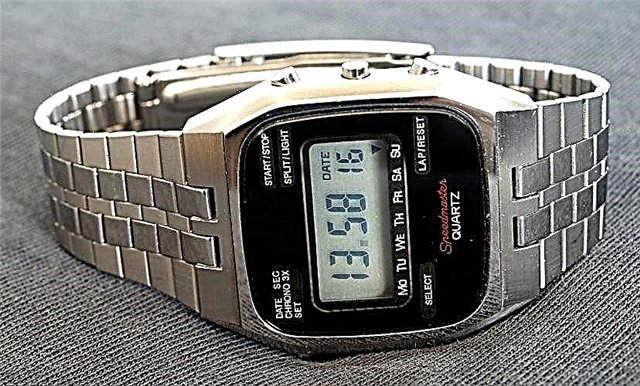
Any modern device that is equipped with text input has the same layout - QWERTY in English and YTSUKE in Russian. It is interesting to know to whom the idea of such an arrangement of letters belongs, how convenient these layouts are and whether there are alternative options.
Typewriter invention
The letters on the keyboard are arranged in this way, thanks to typewriters that appeared in the 19th century. One of them was a device called Smith Premier from an American manufacturer, which is now considered a very rare antique item. The device is characterized by the simplest principle of operation. When the user presses a key, a special lever is activated - the hammer. At the top, it is equipped with a cast image of a certain letter. Between the lever and the paper passes the tape, which is impregnated with ink. At the same time, the hammer hits the tape and leaves a clear imprint on the paper. Similarly, all text is typed.

The first writing device was invented by Christopher Scholes in 1868. It had a different design - it consisted of 36 keys arranged in 2 rows. The letters were arranged in alphabetical order, the numbers were from 2 to 9. The inventor refused the numbers 1, 0 in order to save space, since the device was already too large. They were replaced with the letters “O” and “I”.
The disadvantages of this machine were discovered later, when the printing speed gradually increased. The design of the hammers did not allow them to move fast enough, so they clung to each other, causing malfunctions of the machine.As a result, it was necessary to suspend work, to disengage the hammers, which often caused the device to fail.
Typewriter manufacturers realized their mistake and decided to change the design - they made the keys more ergonomic, making them look like buttons. They were also arranged in three rows, but they did not refuse the alphabetical layout. This was far from the final version of the device. So, Christopher Scholes made dozens of samples, each of which the inventor made some improvements.

In 1872, a machine with four rows of keys appeared. The layout is as similar as possible to the modern one with some differences. In the future, it was this sample that was launched into mass production under the name “Remington No.I”.
Interesting fact: it is believed that the first literary work that was printed on a typewriter is the novel “The Adventures of Tom Sawyer” (Mark Twain).
QWERTY Layout Features
In 1878, an updated version was released - "Remington No.2", on which the layout is fully consistent with modern QWERTY. This suggests that QWERTY appeared and formed precisely in 1878. Only with the release of this device, the user was able to print both lowercase and uppercase letters (previously only uppercase), thanks to the appearance of the Shift key. In total, the design contained 40 keys, and characters - 76.

The QWERTY layout was formed by identifying the most common letters in the English language. It is not known exactly how this was done during the invention of typewriters. One option is to manually count the number of all letters in a particular work, to count the number of each letter individually.Then it remains only to establish the frequency of occurrence, dividing the number of a certain letter by the designation of the number of all letters.
The essence of QWERTY is to place the frequently used letters further from the index fingers (since there was no blind typing method before, and two fingers tapped the keys). Despite the fact that it is used to this day, this layout has its drawbacks. For example, you have to make a lot of finger movements, especially if for a person typing is a working necessity. It is roughly estimated that in 8 hours fingers overcome the distance on the keyboard of 7 km.
It would seem that with the advent of modern technology equipped with a keyboard, the need for QWERTY disappears - there are no hammers that cling to each other. But all over the world they are so used to this layout that it makes no sense to introduce any changes. Moreover, you will have to completely change the production of equipment with a keyboard or use several layout options, which is very inconvenient.
Alternative layouts
However, QWERTY is not the only way to arrange letters. There is a Dvorak scheme named after its inventor, a professor at the University of Washington, Arthur Dvorak. He preferred to place frequently used letters at the top and middle of the keyboard. There are also vowels under the user's left hand, and common consonants under his right hand. Thus, it is possible to reduce the burden on the hands.Using the Dvorak layout, you can reduce the distance from 7 km to 2 km and thus increase printing efficiency.

Interesting fact: another not accustomed layout - Latin Colemak. The main goal of this layout is to enable the user to type text as quickly and efficiently as possible. In terms of speed, it is even faster than Dvorak. Here, the common letters are located on the second row, so the fingers move less on the keyboard.

As for the Russian layout of YTsUKE, in this case, many mistakes and shortcomings were avoided. Since all the flaws have already been eliminated earlier, from the very beginning the layout in Russian was made as rational as possible. The letters are arranged conveniently: under the index fingers - frequently used letters, under the little fingers - rarely found.
However, the Russian layout also has disadvantages. For example, in a letter you often need to put a comma, but there is no separate button for it - only a combination of Shift and a period.
The letters on the English keyboard are arranged in accordance with the QWERTY layout, which originally appeared on typewriters in 1878. They worked at the expense of hammers, which often connected to each other during fast typing. The purpose of QWERTY is to place frequently occurring letters away from the index fingers that used to type text. Switching to a new layout is not practical, since QWERTY is universally recognized in the world and everyone is used to it.The Russian layout is formed taking into account the experience of Western manufacturers and is designed for an ergonomic arrangement of letters, simplifying typing.












